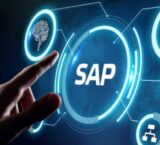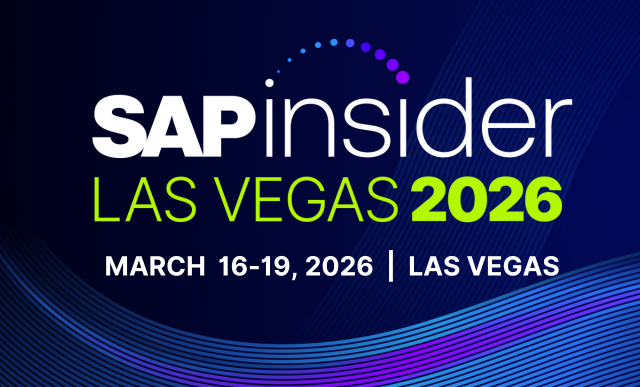SAP Platform and Technology
SAP Business Technology Platform | SAP Cloud Connector | SAP Cloud Integration Platform | SAP Cloud Migration | SAP Cloud Platform | SAP Cloud Providers | SAP Cloud Strategy | SAP Container Platform | SAP Digital Asset Management | SAP Digital Integration Hub | SAP Digital Signature | SAP HANA Enterprise Cloud | SAP HEC | SAP Hyperscalers | SAP Infrastructure | SAP Messaging | SAP Smart Forms
Filter By
Browse By
- SAP Analytics and AI
- SAP Application Development and Integration
- All SAP Application Development and Integration
- SAP ABAP
- SAP ABAP Development Tools
- SAP ABAP Test Cockpit
- SAP API Management
- SAP BAPI
- SAP Basis
- SAP BRF
- SAP Business Application Studio
- SAP CMS
- SAP Design Studio
- SAP Development Tools
- SAP DevOps
- SAP EAI
- SAP EDI
- SAP Extension Suite
- SAP Fiori
- SAP Fiori Elements
- SAP Integration Suite
- SAP Low Code Application Development
- SAP Low Code Automation
- SAP Netweaver
- SAP Release Management
- SAP UI5
- SAP Web Application Server
- SAP Web IDE
- SAP Business Process Management
- SAP Center of Excellence
- SAP CIO
- SAP Customer Experience
- SAP Data and Data Management
- All SAP Data and Data Management
- SAP BW
- SAP BW/4HANA
- SAP Crystal Reports
- SAP Data Archiving
- SAP Data Center
- SAP Data Governance
- SAP Data Integration
- SAP Data Migration
- SAP Data Quality
- SAP Data Services
- SAP Data Strategy
- SAP Data Visualization
- SAP Data Warehouse Cloud
- SAP DMS
- SAP Document Control
- SAP EIM
- SAP ETL
- SAP ETL Tools
- SAP HANA
- SAP HANA Administration
- SAP HANA Deployment Infrastructure
- SAP HANA Studio
- SAP Master Data
- SAP Master Data Governance
- SAP MDM
- SAP Enterprise Architect
- SAP Enterprise Asset Management
- SAP ERP
- SAP Finance
- All SAP Finance
- SAP Accounting
- SAP AR AP
- SAP Asset Accounting
- SAP Billing Systems
- SAP BPC
- SAP BRIM
- SAP Cash Management
- SAP Central Finance
- SAP Controlling
- SAP COPA
- SAP Cost Center Accounting
- SAP Currency Risk
- SAP e-invoicing
- SAP FICO
- SAP Finance Automation
- SAP Advanced Financial Closing
- SAP Financial Consolidation
- SAP Financial Planning
- SAP FX Risk
- SAP General Ledger
- SAP Global Tax Management
- SAP Hyperion
- SAP Order to Cash
- SAP Payment Processing
- SAP Profitability Analysis
- SAP Rebate Management
- SAP S/4HANA Finance
- SAP SWIFT Compliance
- SAP Treasury Management
- SAP Universal Journal
- SAP Governance Risk and Compliance
- SAP Human Capital Management
- SAP Intelligent Technologies
- SAP Platform and Technology
- All SAP Platform and Technology
- SAP Business Technology Platform
- SAP Cloud
- SAP Cloud Connector
- SAP Cloud Integration Platform
- SAP Cloud Migration
- SAP Cloud Platform
- SAP Cloud Providers
- SAP Cloud Strategy
- SAP Digital Signature
- SAP Container Platform
- SAP HANA Enterprise Cloud
- SAP Digital Asset Management
- SAP Smart Forms
- SAP HEC
- SAP Digital Integration Hub
- SAP Hyperscalers
- SAP Infrastructure
- SAP Messaging
- SAP Quality and Testing
- SAP Security
- SAP Spend Management
- SAP Supply Chain Management
- All SAP Supply Chain Management
- SAP APO
- SAP Asset Management
- SAP Business Network
- SAP Digital Manufacturing Cloud
- SAP Digital Twin
- SAP EWM
- SAP IBP
- SAP Inventory Management
- SAP Label Printing
- SAP Logistics
- SAP Manufacturing
- SAP Manufacturing Automation
- SAP MES
- SAP MII
- SAP MM
- SAP MRO
- SAP MRP
- SAP Order Management
- SAP Plant Maintenance
- SAP PLM
- SAP Production Planning
- SAP S&OP
- SAP SD
- SAP SPM
- SAP Supply Chain Planning
- SAP Track and Trace
- SAP Transportation Management
- SAP System Administration
What is SAP Platform and Technology?
SAP Platform and Technology history started with mainframe-based applications, with the first official release being the SAP R/2 solution. This was eventually replaced by SAP R/3 which was the first application running a 3-tier client/server architecture. A client/server architecture continues to be the model for on-premise applications sold by SAP, even when those applications are often running on some form of cloud infrastructure. The newest SAP applications use a purely cloud-based infrastructure and are often software-as-a-service solutions.
What is SAP Platform and Technology?
SAP Platform and Technology history started with mainframe-based applications, with the first official release being the SAP R/2 solution. This was eventually replaced by SAP R/3 which was the first application running a 3-tier client/server architecture. A client/server architecture continues to be the model for on-premise applications sold by SAP, even when those applications are often running on some form of cloud infrastructure. The newest SAP applications use a purely cloud-based infrastructure and are often software-as-a-service solutions.
While these represented the infrastructure on which SAP solutions were built, SAP customers also needed platforms on which to build and develop applications. The first solution that SAP released was the SAP NetWeaver platform which was a software stack for many of SAP’s applications. First released in 2004, SAP NetWeaver consisted of an ABAP software stack as well as a Java development stack. This allowed organizations to build and deploy applications using business APIs and integration capabilities to other SAP solutions.
Building on the success of SAP NetWeaver, SAP released the SAP Cloud Platform as a similar resource for organizations looking to build cloud-based applications. More recently, SAP brought the SAP Cloud Platform together with other services and technologies to release the SAP Business Technology Platform (BTP). Key capabilities of SAP BTP include database and data management, analytics, application development and integration, and intelligent technologies like artificial intelligence and machine learning.
One of the most important capabilities of SAP solutions has been the ability to enhance them by creating customizations and extensions. Implementations of SAP ERP systems like SAP ECC frequently involved thousands or even hundreds of thousands of lines of customized code based on SAP ABAP and written using platforms like SAP NetWeaver. New solutions like SAP S/4HANA focus on extensions which provide additional functionality without requiring underlying code changes using SAP BTP as the means for achieving these extensions.
SAP BTP is also the technology solution that SAP organizations are looking to use to leverage to build on their investments in SAP S/4HANA.
From a technology and infrastructure perspective, nearly nine in ten SAP customers are now running at least some SAP workloads in the cloud. Underlying data repositories are also more likely to be moving to cloud-based infrastructure.
SAP has many implementation partners that will either provide a technology platform on which SAP solutions can run or will assist with the development of applications that leverage technologies like SAP BTP. Examples of partners providing infrastructure include Dell Technologies, HPE, and Intel. Cloud providers for SAP services include AWS, Google Cloud, and Microsoft. Implementation partners also assist organizations with building on this SAP Platform and Technology.
52 results
-

SUSE Unveils SLES for SAP Applications 16 with AI-Driven Operations
Reading time: 3 mins
SUSE has launched SUSE Linux Enterprise Server 16 for SAP applications, featuring a modern OS foundation and Trento 3.0 with AI-driven insights, aimed at simplifying operational complexities and enhancing automation for organizations transitioning to SAP S/4HANA.
-

Are You Ready for ChaRM’s Retirement?
Reading time: 2 mins
SAP’s Change Request Management (ChaRM) is set for retirement in 2027, prompting users to explore alternatives like SAP Cloud ALM. Intelligent Change Management (ICM) offers a new methodology to enhance change processes and mitigate business disruption.
-

Understanding SAP Build: Everything You Need to Know About SAP’s Low-Code Platform
Reading time: 3 mins
Unlock agility with SAP Build — the low-code platform on SAP Business Technology Platform that empowers business teams to build apps, automate workflows and create digital workspaces. With drag-and-drop ease, enterprise governance and deep integration with your SAP ecosystem, innovation moves from idea to production at lightning speed.
-
-

The Evolving Role of Quality Engineering in an AI-Driven World
Reading time: 3 mins
The integration of AI in software development is transforming Quality Engineers’ roles from tactical execution to strategic oversight, requiring them to focus on business value, mastery of peer review, and effective management of AI context.
-

Accelerate Your Journey to Cloud ERP With SAP Business Technology Platform
Reading time: 5 mins
Organizations are moving their core ERP to the cloud driven by cost reduction, system consolidation, and innovation, with SAP BTP serving as the enabler for successful transitions by facilitating data integration and leveraging AI, alongside a strategic shift in operational mindset and processes.
-

The Cloud-AI Convergence: How SAP’s Strategic Evolution is Redefining Enterprise Success in 2025
Reading time: 5 mins
A perspective for SAP customers and partners navigating the next chapter of business transformation.
-

The CFO’s Guide to Enterprise Resilience with SAP BTP and AI
Reading time: 3 mins
As businesses confront constant disruptions, the role of the CFO is evolving from compliance guardian to resilience architect, leveraging tools like SAP BTP and AI to actively anticipate and manage risks while ensuring organizations are prepared to thrive amid adversity.
-
-

Layer Seven Launches New Edition of Cybersecurity Extension for SAP
Reading time: 3 mins
Layer Seven Security has launched the Cybersecurity Extension for SAP, NetWeaver Edition, enabling organizations to secure their SAP environments without reliance on aging Application Lifecycle Management platforms like SAP Solution Manager.
-

Your Journey, Our Purpose: How SAP Business Technology Platform Accelerates Digital Transformation
Reading time: 9 mins
The article emphasizes the importance of digital transformation through emerging technologies like AI and cloud solutions, highlighting how organizations can overcome legacy system challenges to innovate, enhance customer experiences, and ensure future growth, particularly using offerings like SAP Business Suite and SAP Business Technology Platform.
-

Bringing Zero Trust to SAP Landscapes: A Policy-Driven Approach to Digital Transformation
Reading time: 3 mins
As businesses increasingly transition to hybrid and multi-cloud environments, Viasat Inc. collaborates with NextLabs to implement a Zero Trust Data-Centric Security model for effective access control and data protection across SAP systems, reflecting a broader industry shift toward dynamic, policy-driven security frameworks.
Become a Member
Unlimited access to thousands of resources for SAP-specific expertise that can only be found here.
Become a Partner
Access exclusive SAP insights, expert marketing strategies, and high-value services including research reports, webinars, and buyers' guides, all designed to boost your campaign ROI by up to 50% within the SAP ecosystem.
Upcoming Events
Related Vendors
Your request has been successfully sent

